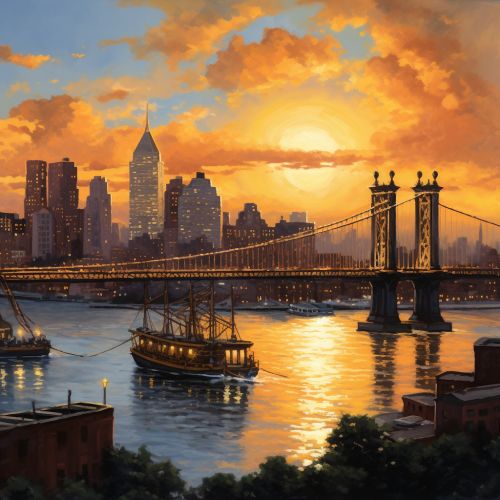Brooklyn
History
Brooklyn's history dates back to the 17th century when it was first settled by the Dutch as part of the colony of New Netherland. The Dutch named the area Breuckelen, after a town in the Netherlands. The area was later taken over by the English in 1664 and renamed Kings County. Brooklyn remained a largely rural area until the 19th century when it began to rapidly urbanize following the completion of the Brooklyn Bridge in 1883.


Geography
Brooklyn is located on the westernmost point of Long Island and shares a land border with the borough of Queens to the east. To the west, across the East River, is the borough of Manhattan. Brooklyn's diverse geography includes miles of coastline, rolling hills, and a number of small islands off its shore in Jamaica Bay.
Demographics
As of the 2020 census, Brooklyn had a population of over 2.7 million people, making it the most populous of New York City's five boroughs. The borough is known for its cultural, social, and ethnic diversity, with a wide array of communities representing many different ethnic groups.
Economy
Brooklyn's economy is diverse and dynamic, with a mix of traditional industries and emerging sectors. The borough is a hub for arts and culture, with a thriving scene of artists, musicians, and writers. It is also home to a growing tech sector, with a number of tech startups and innovation hubs located in neighborhoods like DUMBO and the Brooklyn Navy Yard.
Culture
Brooklyn is a major cultural hub, with a vibrant arts scene, a rich literary tradition, and a wide array of cultural institutions. The borough is home to renowned institutions like the Brooklyn Museum and the Brooklyn Academy of Music, as well as a host of smaller galleries, theaters, and performance spaces.
Education
Brooklyn is served by the New York City Department of Education, the largest school district in the United States. The borough is also home to a number of higher education institutions, including Brooklyn College, part of the City University of New York, and private institutions like Pratt Institute and St. Francis College.
Transportation
Brooklyn is served by an extensive network of public transportation options, including the New York City Subway, several commuter rail lines, and numerous bus routes. The borough is also known for its iconic bridges, including the Brooklyn Bridge and the Verrazzano-Narrows Bridge, which connect Brooklyn to Manhattan and Staten Island, respectively.
